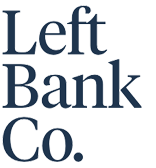Return to the city: post-Covid recovery for our CBDs?
Image: George Street during the pandemic
“What if we could return to something better?”
October 2021 marked the end of almost four months of lockdown in Sydney, and saw Melbourne exit its never-ending cycle of restrictions that won it the moniker of the world’s most locked down city. While many are jubilant at the idea of being able to resume their lives, others remain cautiously optimistic about what a future living with COVID-19 holds.
The lifting of the lockdown heralds the return to the office. What that means at this point in time is anyone’s guess. Across our cities, there is a glut of vacant commercial floorspace that is going to take time to reoccupy, and the pandemic has proven that productivity does not depend on being in the workplace. Commentators are talking about employers needing to ‘earn the commute’, making the workplace proposition more compelling than ever before. Some are very aptly recognising that the city itself – and what you can do there around your productive hours in the office – will also be a key attractor.
This critical moment in time begs the question, how can we realign our expectations of our city centres? Could the post-COVID reset enable us to think more expansively about what we want to experience together in the heart of our cities? Could this new chapter be more about creativity, our culture, diversity and equity…rather than returning to cities that are all about exclusivity?
Throwing out the planning rulebook
In September, the NSW Minister for Planning announced a ‘summer of freedom’, a period where the planning rulebook would be thrown out and we could finally use the city the way we’ve always wanted to. This commitment was just backed up with a promise to give live music, arts and culture freedom to use shopfronts and retail spaces with few limitations.
If government is prepared to give ground on conditions and controls, what else can we experiment with? More than allowing opportunities for al fresco dining, now is the opportunity to go all in, building on the pre-pandemic reversal of the lock out laws and creating a genuine and thriving night-time economy.
Throwing out the planning rulebook and rewriting a new one for a more active, creative and lively city could be one of the most important legacies of this era. We are sure they’ll find that the world does not end when you drink a glass of wine on a sidewalk outside of a designated area.
Making space for creativity, diversity and equity
Elizabeth Farrelly’s recent article suggests that instead of returning to a world in which we segregate work-life and home-life, the post-pandemic urban model opens the possibility of other diverse and equitable uses being integrated into the fabric of the city, such as creativity and culture. It won’t be a surprise to anyone who follows our work that we’re big champions of the creative industries, working with partners and clients to find solutions to preserve and increase space for the sector.
There is no doubt that the pandemic has disproportionately impacted the sector more so than other industries, with the loss of organisations that could not survive such a disruption to their business model. Perhaps now is the opportunity for our reimagined cities to proactively provide space for culture, creativity and other equitable functions, not only because these industries are a sure-fire way to bring life back to a place, but also because the cost of losing these aspects of our urban culture is just too much.
Without a strong creative identity or a diverse and equitable economy, our cities will struggle to recover their brand, innovation potential, footfall and spend, and fail to retain skilled workers who can chose to live in almost any city in the world. Projects like the Bathurst Street Creative Studios – to be managed by affordable space provider Brand X – are a really important signal of how the city can be considered a workplace for everyone. Now is the time to take a leaf out of this particular book and find ways to diversify the city for a wider range of equitable industries.
Walking the talk
There is a realisation in many corners of the property sector that restoring the pre-pandemic amenity and experiences just won’t be enough. If we are to reimagine our cities as places embedded with creativity and culture, we need our urban leaders – across government and in the private sector – to think of the sector as more than a short-lived measure to lure people back to into the city.
Temporary activation measures are not only exploitative of the sector, they fundamentally fail to preserve essential parts of industry and the economy. Without strategies for creatives to secure long-term and affordable tenure, we are only going to start another cycle of gentrification that will ultimately worsen the displacement of creative industries, loss of employment and loss of creative output.
Now is the time for the property sector to show it truly values what creativity and culture can offer. If we don’t use this time to seed more affordable and programmable space for creativity, if we don’t facilitate a productive conversation between the property and cultural sector to find and materialise these ideas, we could see this wave of opportunity pass us by.
This is an invitation to our clients, collaborators and friends to work with us to enact long-lasting and significant change to our cities, and to look at the merits of culture and creativity in reimagining how they come to life. We look forward to working over the next few months to turn goodwill into strategies and returns for all invested in the future of our cities.

